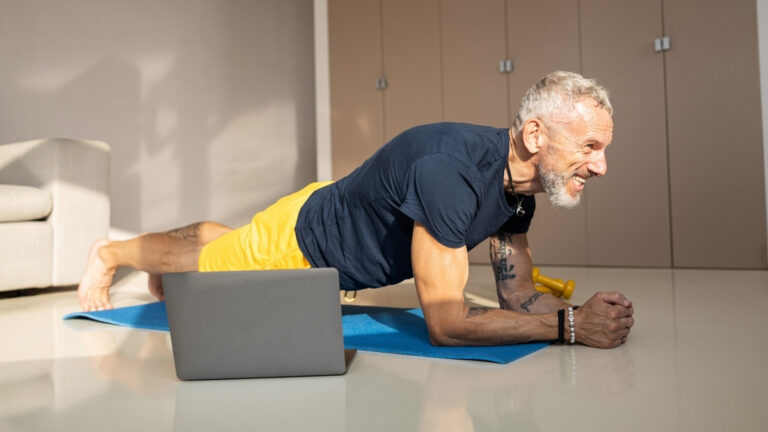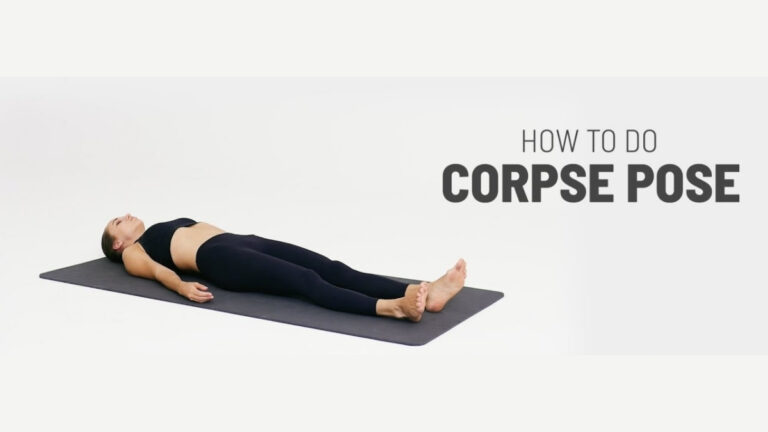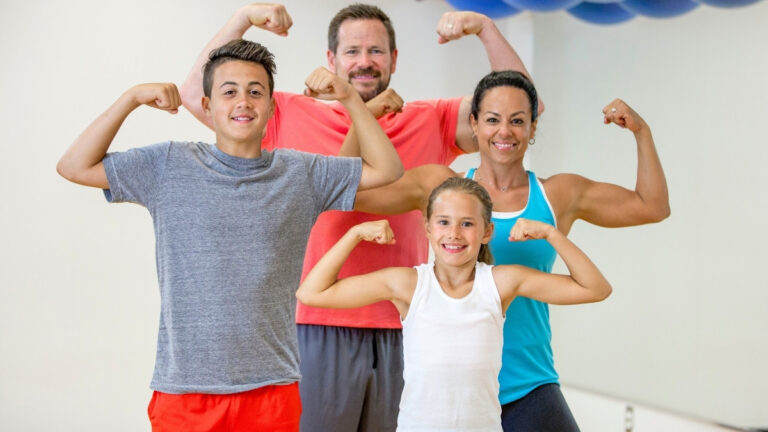This 3-Move Routine Is Helping Seniors Walk Pain-Free Again — Here’s How It Works
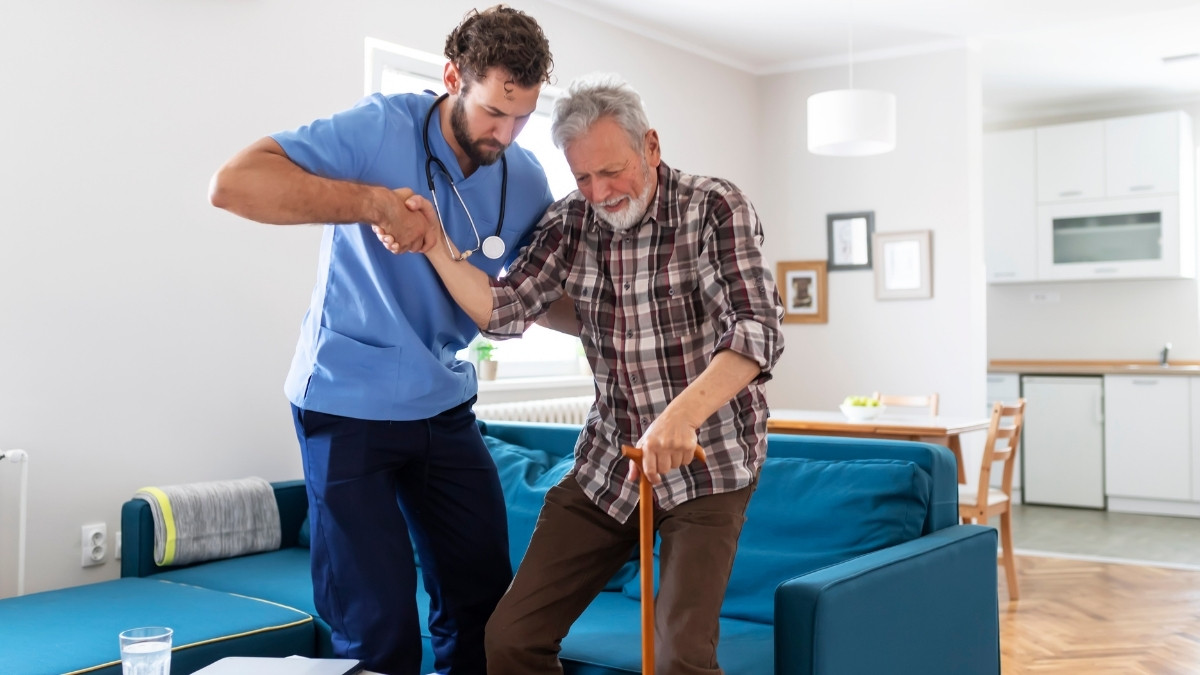
If walking to your mailbox feels like climbing a mountain, you’re not alone—but a simple 3-move routine is changing that for thousands of seniors. Many older adults experience pain in their hips, knees, or lower back, which makes everyday walking difficult.
Fear of falling can limit daily activities and chip away at independence. Over 14 million older adults report a fall each year, and the fall death rate has risen 41% between 2012 and 2021.
This guide shows you three specific exercises proven to improve walking ability. These exercises for seniors to walk pain-free target the exact muscles that support safe, comfortable movement. You’ll learn how to perform each exercise safely at home, follow a simple weekly schedule, and understand when to expect results.

By doing these senior mobility exercises and walking exercises for older adults, you can regain confidence, reduce fall risk, and move more freely.
Why Walking Becomes Painful After 65 (And It’s Not Just Age)
Take a moment to notice how you’re sitting right now. Your hips are bent. Your legs are probably crossed. You’ve been in this position for hours today—maybe watching TV, eating meals, or reading. This is exactly what’s making your walks painful.
Here’s what happens when you sit too much. Your hip flexor muscles get tight and short. Think of them like rubber bands that stay bunched up. When you stand up to walk, those tight muscles pull on your hips and lower back. That’s the ache you feel with every step.
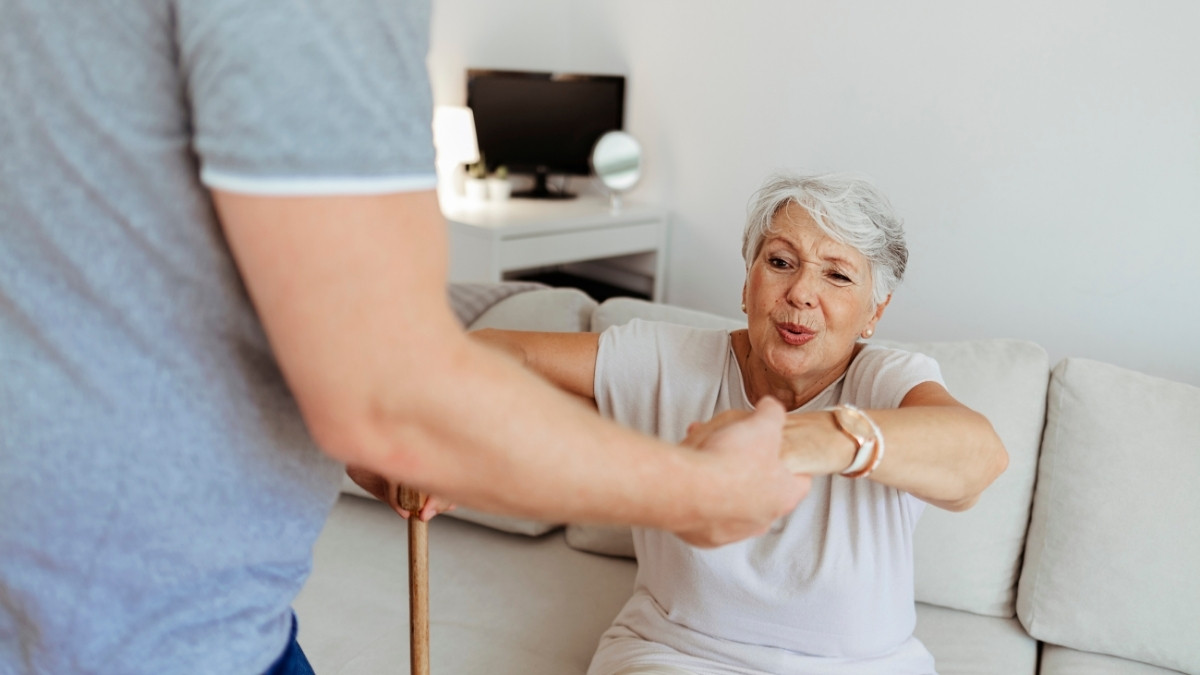
But tight hips are just the start. Your quadriceps muscles—the ones on the front of your thighs—get weak when you don’t use them. These muscles support your knees. Without strong quads, your knees have to work harder. This leads to pain going up stairs or walking on uneven ground.
Your balance suffers too. The small stabilizer muscles in your ankles and hips forget how to keep you steady. This creates a scary cycle: you hurt, so you move less, which makes you weaker, which causes more pain.
The numbers tell a serious story. In 2023, the fall death rate for adults 65 and older hit 69.9 per 100,000 people. In 2022, healthcare costs for fall injuries reached $80 billion. For seniors aged 65 to 74, fall deaths jumped more than 70%.
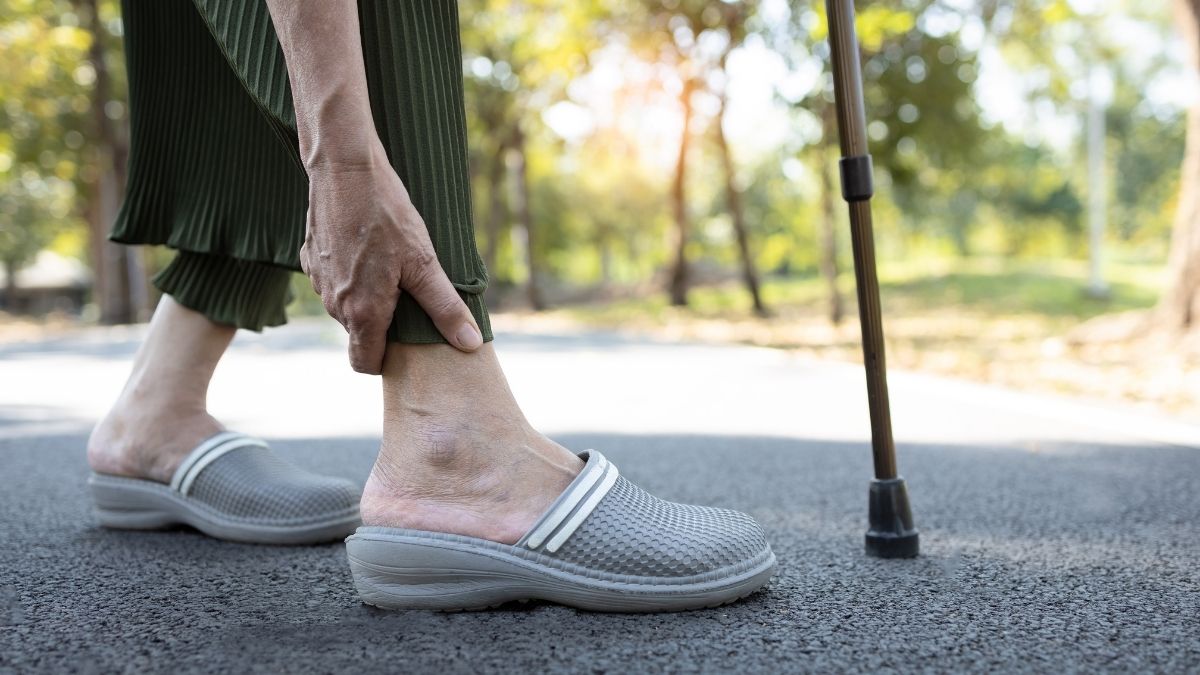
This leads to fear. You start avoiding walks. You skip the grocery store. You say no to your grandkids.
But here’s the encouraging news: three specific pain relief exercises for seniors can reverse these patterns. Senior mobility isn’t lost forever—it just needs the right approach.
The Science Behind the 3-Move Routine
Physical therapists recommend these three exercises for one critical reason: they work together like a team. Each move fixes one part of your walking problem. When you do all three, you rebuild the complete system your body needs to walk without pain.
Think about what happens when you walk. Your hip flexors lift your leg forward. Your quadriceps straighten your knee and absorb shock. Your ankle muscles keep you balanced and push you forward. These three muscle groups must work together. When one is weak or tight, the others struggle to compensate.
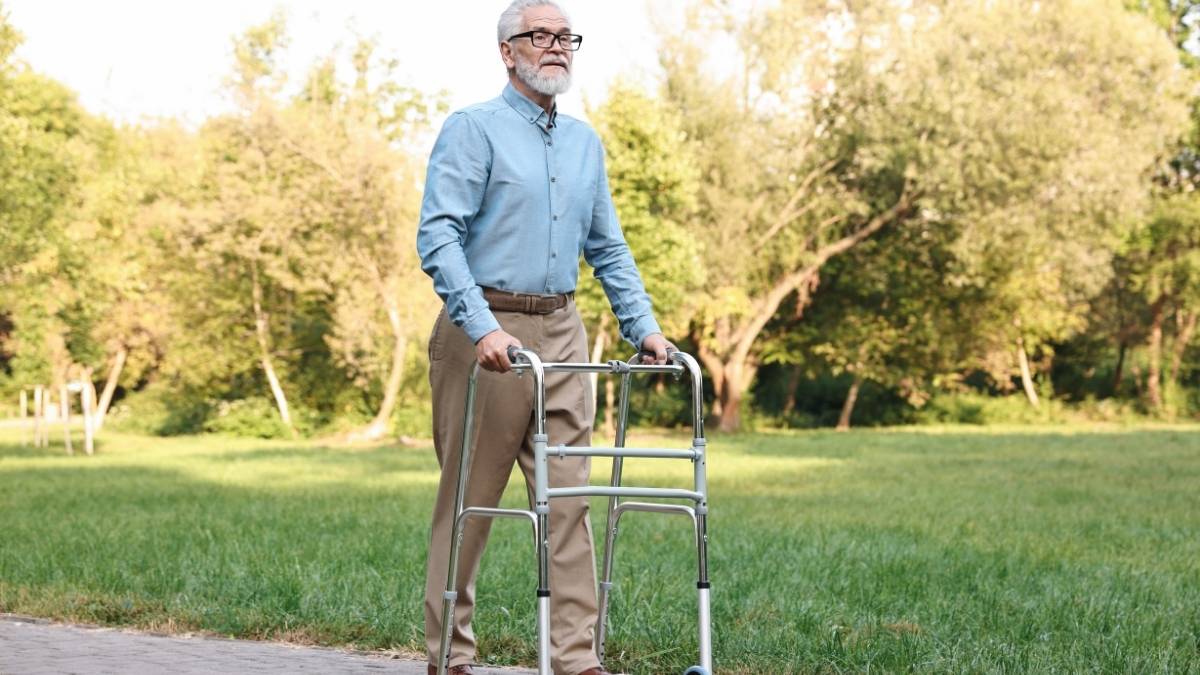
Here’s why this matters for walking exercises for older adults. Flexible hip flexors help you stand up straight. When your posture is neutral, your spine doesn’t hurt. You can walk longer without your back aching. You’ll even sleep better because lying down feels more comfortable.
Strength training for seniors works differently than you might think. You’re not building bulky muscles. You’re teaching your joints to stay stable. Strong muscles act like guardrails around your knees and hips. They prevent the wobbling that causes injury and pain.

Regular movement improves blood flow to your muscles. Better blood flow means faster recovery, more energy, and a healthier heart. These mobility exercises also help you sleep deeper, balance better, and feel less anxious.
The progression principle is simple: start easy, add more slowly. Your body adapts when you give it time. Push too hard too fast, and you risk injury. Go slow and steady, and you build strength that lasts.
Move #1 – Seated Leg Lifts for Stronger Quadriceps
This foundational move targets the muscles that power every step you take. Your quadriceps help you stand from a chair, climb stairs, and walk safely. Strengthening them with quadriceps exercises for seniors is simple with seated exercises.
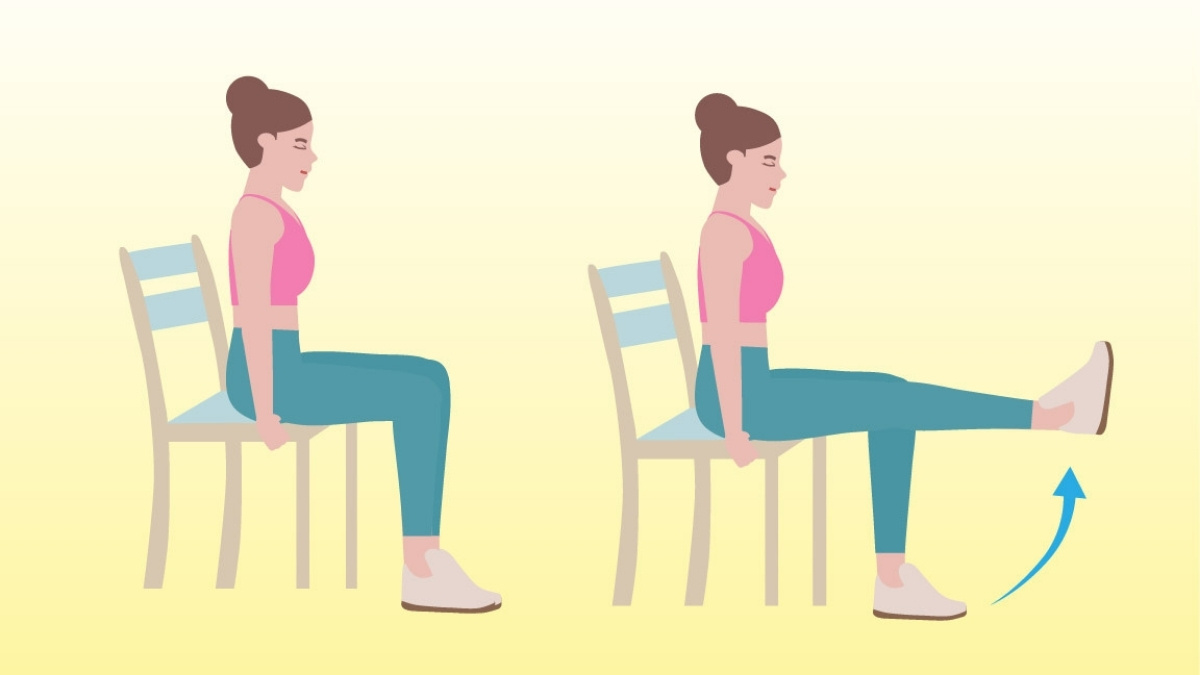
How to Do It:
- Sit tall in a sturdy chair with your feet flat on the floor.
- Slowly lift one leg straight out in front of you as high as is comfortable. Hold for 2–3 seconds.
- Lower your leg slowly and switch to the other leg. This is one rep.
Safety Tips:
- Keep your back straight and core engaged.
- Don’t lock your knee; move slowly.
- Avoid swinging your leg.
Common Mistakes:
- Leaning back in the chair.
- Raising the leg too fast.
- Not alternating legs evenly.
Modifications:
- If it’s hard to lift your leg, raise it only a few inches.
- Use ankle weights when you want more challenge.
Reps & Sets: Start with 10 reps per leg, 2 sets. Gradually increase as you get stronger.
Move #2 – Standing Hip Flexor Stretch
If you’ve been sitting more than usual, this stretch is non-negotiable. Sitting tightens your hip flexors, which can make walking, standing, and climbing stairs harder. Doing this hip flexor stretch improves flexibility and can help you move more comfortably.
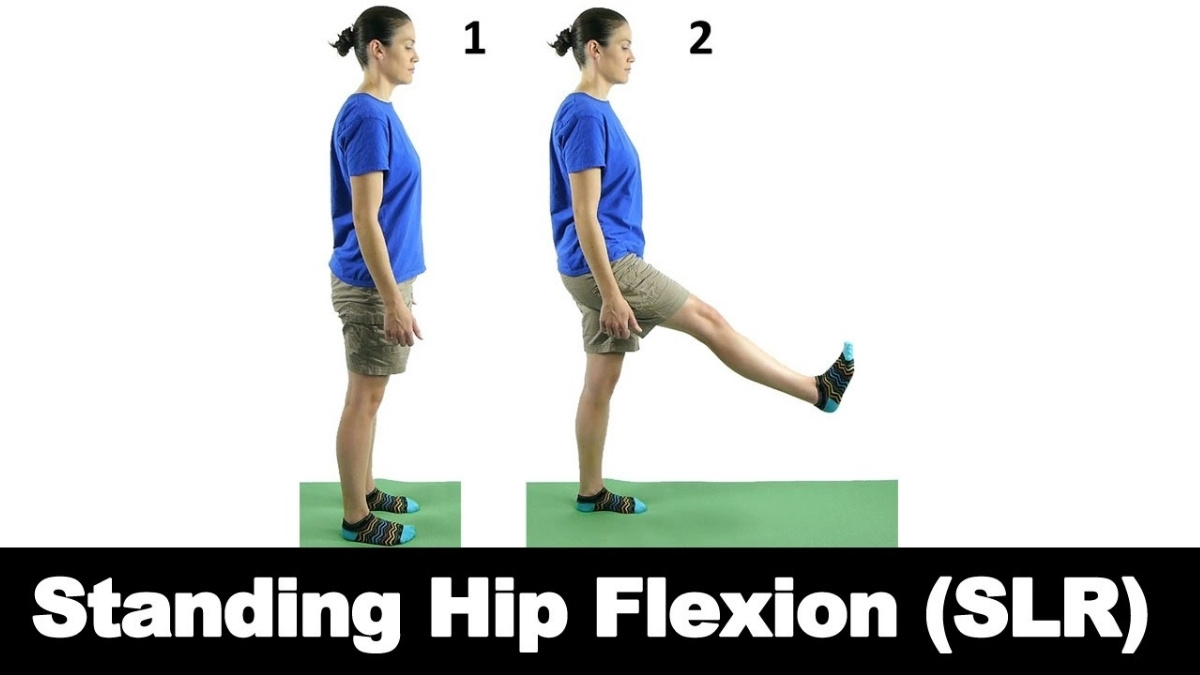
How to Do It:
- Stand with feet hip-width apart.
- Take a big step forward with one foot.
- Bend the front knee while pushing the opposite hip forward.
- Hold for 30–60 seconds. Switch sides.
Tips & Safety:
- Use a chair or wall for balance if needed.
- Keep your back straight. Don’t over-lean.
- Breathe steadily throughout the stretch.
Why It Matters: When your hip flexors aren’t tight, walking feels easier and you can move faster without discomfort.
Move #3 – Wall-Supported Heel Raises for Balance
This final move addresses one of the biggest fall risk factors: weak ankles. Strong ankles improve balance, stability, and confidence when walking or climbing stairs. These balance exercises for seniors also support knee flexibility and help prevent falls.
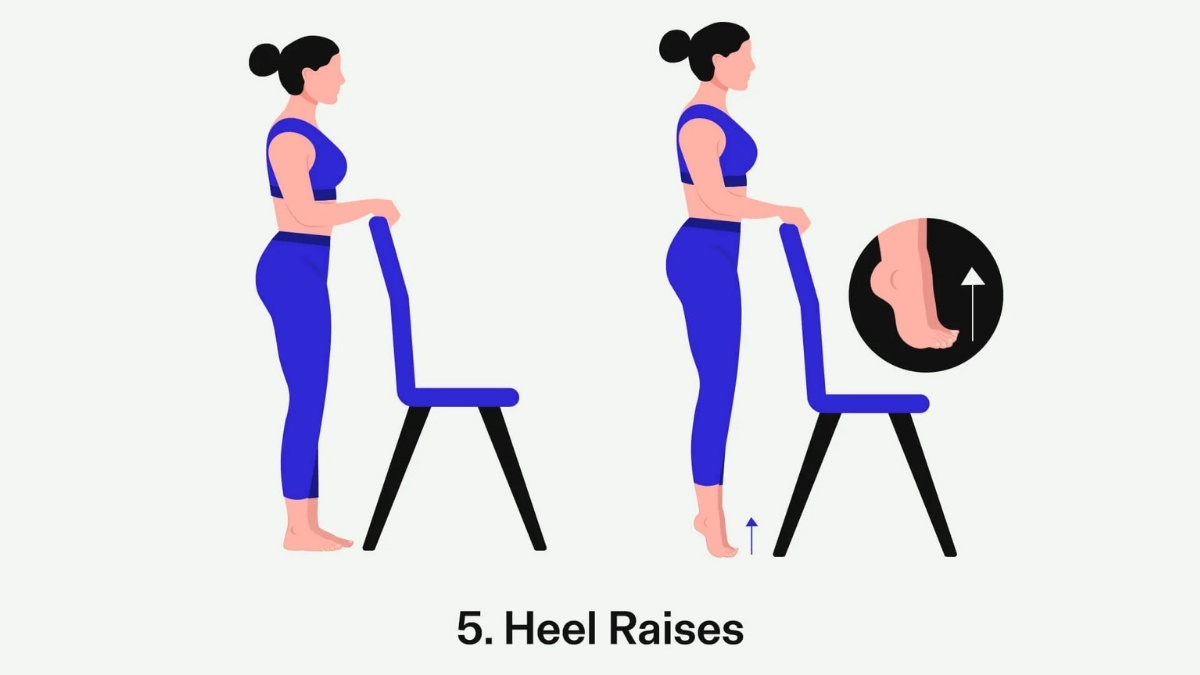
How to Do It:
- Stand behind a chair or next to a wall for support.
- Slowly rise onto your toes, lifting your heels off the ground.
- Hold briefly, then lower back down slowly.
- Repeat 10–12 times.
Safety Tips:
- Keep your core tight and back straight.
- Move slowly to avoid wobbling.
- Use the wall or chair for extra stability.
Progression: Once you feel steady, try lifting your heels without holding on. This builds ankle strengthening and balance confidence.
Why It Matters: Strong calves and ankles make walking easier and safer. They help shift your weight smoothly, which lowers the risk of tripping.
H2: Your 3-Week Progressive Plan
This plan helps you build strength, balance, and flexibility step by step. Doing a senior exercise routine consistently will make walking, standing, and daily movement easier and safer.

Week 1 – Learning the Movements (3 days per week)
- Focus on form, not speed.
- Schedule: Monday, Wednesday, Friday.
- Move #1: 10 reps per leg, 2 sets
- Move #2: Hold 30 seconds per side
- Move #3: 10 reps, 2 sets
- Take your time and rest if needed. This week is about understanding each exercise.
Week 2 – Building Consistency (4–5 days per week)
- Begin to strengthen your muscles and get into a routine.
- Schedule: Monday, Tuesday, Thursday, Friday.
- Move #1: 12 reps per leg, 2 sets
- Move #2: Hold 45 seconds per side
- Move #3: 12 reps, 2 sets
- Pay attention to balance and controlled movements.
Week 3 – Increasing Repetitions (5 days per week)
- Now your body is ready for a challenge.
- Schedule: Monday through Friday.
- Move #1: 15 reps per leg, 3 sets
- Move #2: Hold 60 seconds per side
- Move #3: 15 reps, 3 sets
- This is progressive training: each week builds on the last.
Tips for Success:
- Aim to do this exercise schedule 3–5 times per week.
- You may notice improvements in walking, balance, and leg strength after 2–3 weeks.
- Listen to your body. Slow progress is better than rushing.
Safety Guidelines Every Senior Should Follow
Your safety matters more than anything else when exercising. These senior exercise safety tips help prevent injuries and falls, so you can stay active and confident.
1. Listen to Your Body
When exercising, it is essential to pay close attention to your body’s signals to avoid injury. Mild muscle fatigue is normal, but sharp pain, sudden discomfort, or unusual shortness of breath is a clear warning to stop immediately. Seniors should move slowly and deliberately, focusing on controlled motions rather than pushing through pain.
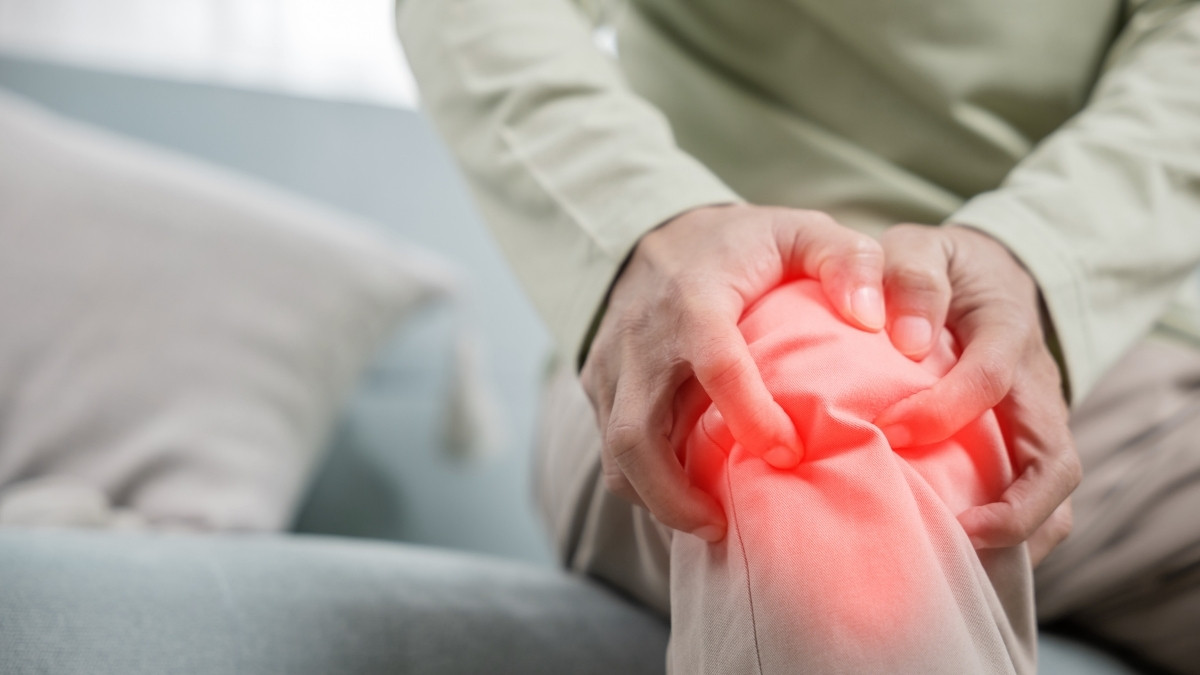
Tightness in the hips, knees, or ankles can indicate weak or overused muscles that need rest or modification. If a movement feels difficult or uncomfortable, reduce the range of motion or try an easier variation to maintain safety. Ignoring these signs can lead to strains, falls, or setbacks in mobility.
2. Warm Up Properly
A proper warm-up is critical for preparing your muscles, joints, and cardiovascular system for exercise, especially for seniors. Spending 3–5 minutes on light activities like walking in place, gentle marching, or slow arm movements increases blood flow and raises muscle temperature.
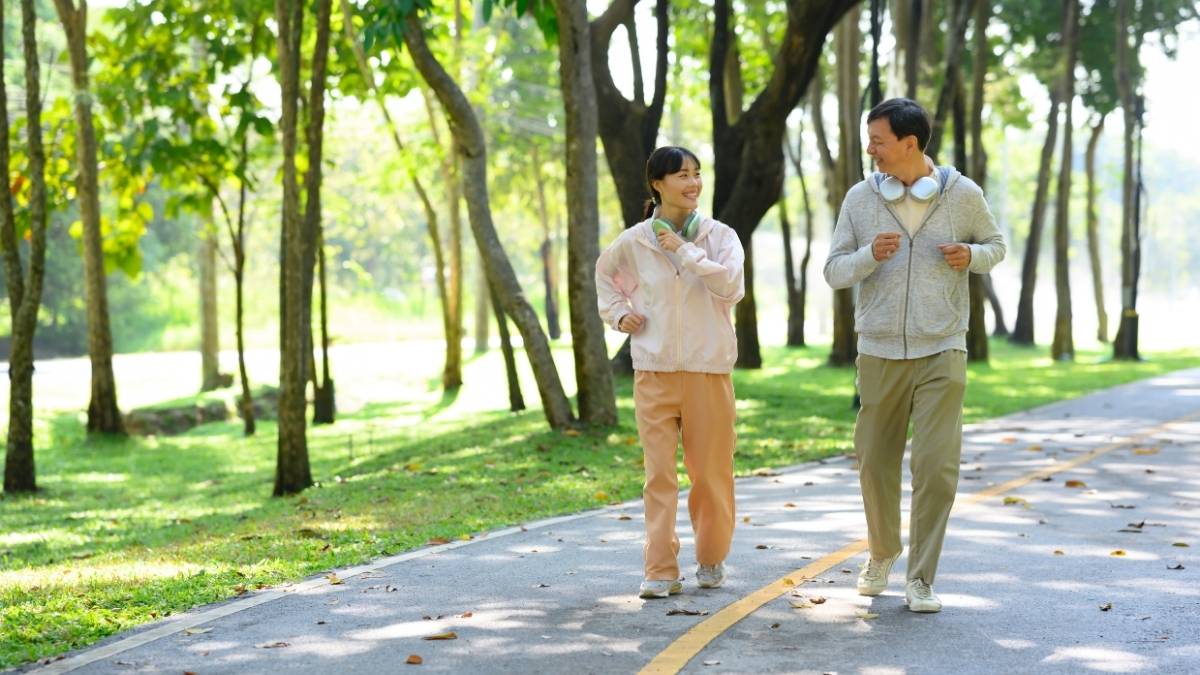
Warm muscles are more flexible, reducing the risk of strains, stiffness, and post-exercise soreness. It also primes your balance and stabilizing muscles, which are crucial for preventing falls during more challenging movements. Skipping a warm-up can make even simple exercises feel difficult and increase the chance of injury.
3. Stretch Safely
Stretching is essential for improving flexibility, relieving tension, and preventing pain in seniors’ hips, legs, and lower back. Each stretch should be held gently for 10–20 seconds without forcing your body into discomfort or pain. Avoid bouncing or jerking motions, which can strain or tear muscles, especially those weakened by age or inactivity.
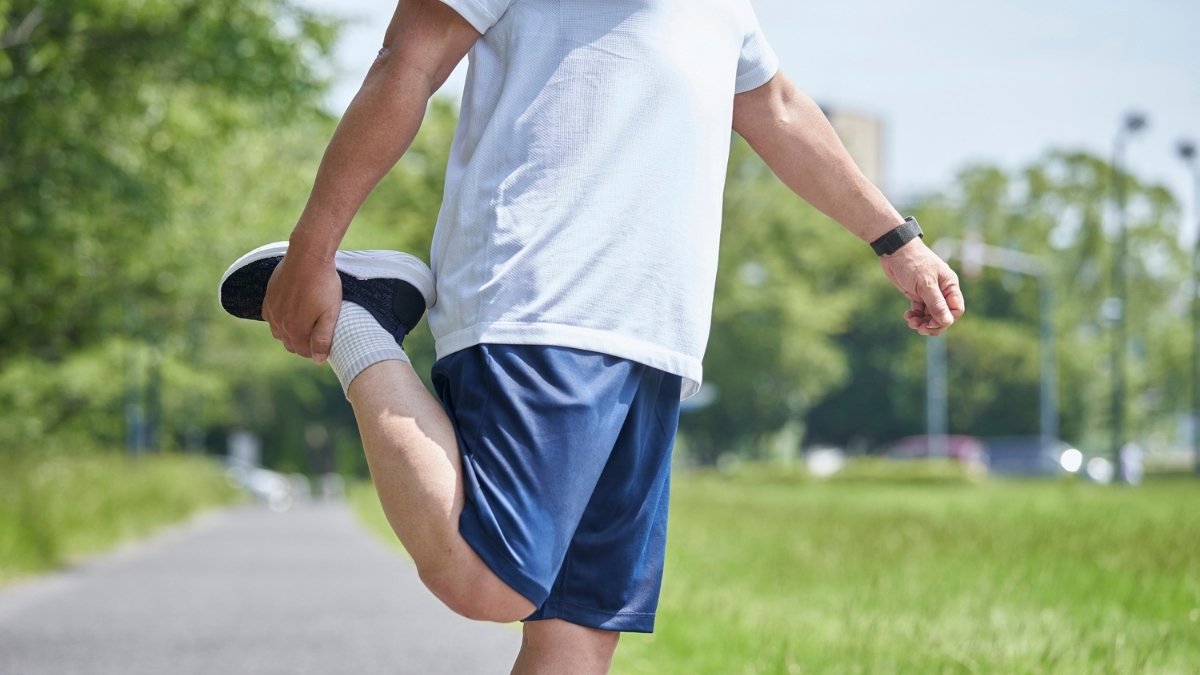
Focus on steady breathing while stretching, as it helps relax tight muscles and improves oxygen flow to tissues. Proper stretching enhances posture, reduces pressure on joints, and allows smoother movement during daily activities.
4. Wear Proper Footwear
Wearing the right shoes is one of the most important safety measures for seniors performing exercises at home. Supportive footwear stabilizes your feet, protects your ankles, and reduces the risk of slipping or tripping during balance or leg-strengthening movements.

Avoid worn-out shoes or socks without grip, as they can compromise stability and increase the chance of falls. Shoes should have firm soles and good arch support, helping your legs absorb shock and move safely. For standing exercises, make sure the surface is flat and non-slip to prevent wobbling or sudden shifts in weight.
5. Stay Hydrated
Hydration is crucial for seniors, as even mild dehydration can lead to fatigue, dizziness, cramps, and decreased exercise performance. Drinking water before, during, and after workouts helps maintain muscle function, joint lubrication, and overall energy levels. Keep a water bottle nearby so it’s easy to sip frequently, especially if your exercise sessions last longer than a few minutes.

Proper hydration supports circulation, helping deliver oxygen and nutrients to muscles and aiding recovery after movement. Seniors are often more prone to dehydration because the sense of thirst decreases with age, making intentional water intake vital.
6. Use Support When Needed
When performing balance or leg-strengthening exercises, always use a wall, sturdy chair, or handrail for stability. These supports help prevent falls and give you the confidence to complete movements correctly, especially if your muscles or joints feel weak. Seniors should start with simple exercises and avoid advanced variations until they feel steady and secure.
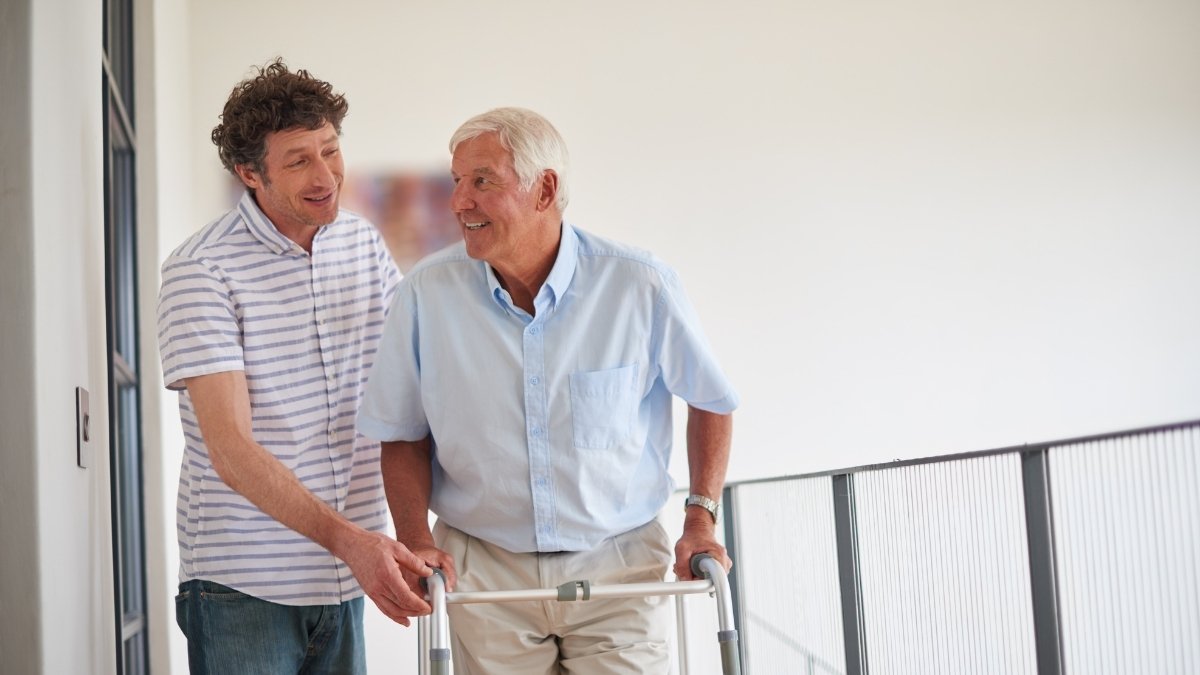
Relying on support is not a sign of weakness—it is a safety measure that protects your joints, muscles, and bones. Gradually, as your strength and balance improve, you can reduce reliance on support while maintaining proper form. Prioritizing safety over showing off ensures consistent progress and reduces the risk of injuries during daily movement.
Know When to Consult a Healthcare Provider
If you have heart conditions, joint problems, or recent surgeries, talk to your doctor before starting a new routine. Even if exercises are gentle, your health history matters.
Why It Matters: Following these fall prevention tips helps you stay active, reduce injury risk, and enjoy your exercise routine. Small steps like warming up, using proper shoes, and listening to your body add up to big benefits.
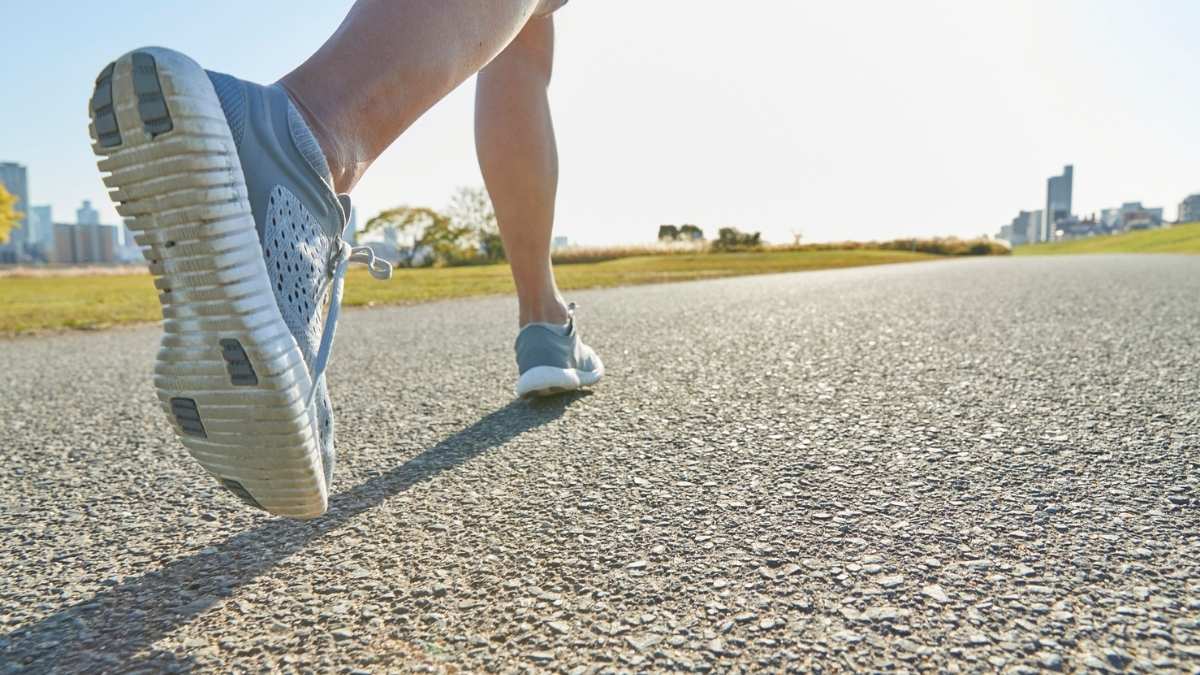
Bottom Line: Safety comes first. By following these guidelines, you can move with confidence and protect your joints, muscles, and balance. Your body will thank you, and you’ll enjoy exercise more.
At the Last,
These three moves—seated leg lifts, hip flexor stretch, and wall-supported heel raises—form a simple routine to strengthen your legs, improve flexibility, and boost balance. Falls are the leading cause of injury for adults 65 and older, but they can be prevented with consistent exercise and awareness of your body.

Consistency matters more than intensity. Start slow, focus on proper form, and gradually increase repetitions. Progressive improvement is normal. You may notice small changes in a few weeks, and significant improvements in walking, standing, and balance over three months.

Call to Action: Start with just Move #1 today. Set a chair in your living room and do 10 leg lifts on each side. Mark your calendar for three days this week. In three weeks, you’ll notice the difference—and in three months, walking pain-free will feel natural again.
These exercises for seniors to walk pain-free are your path to maintained independence, reduced fall risk, and the freedom to move confidently.


